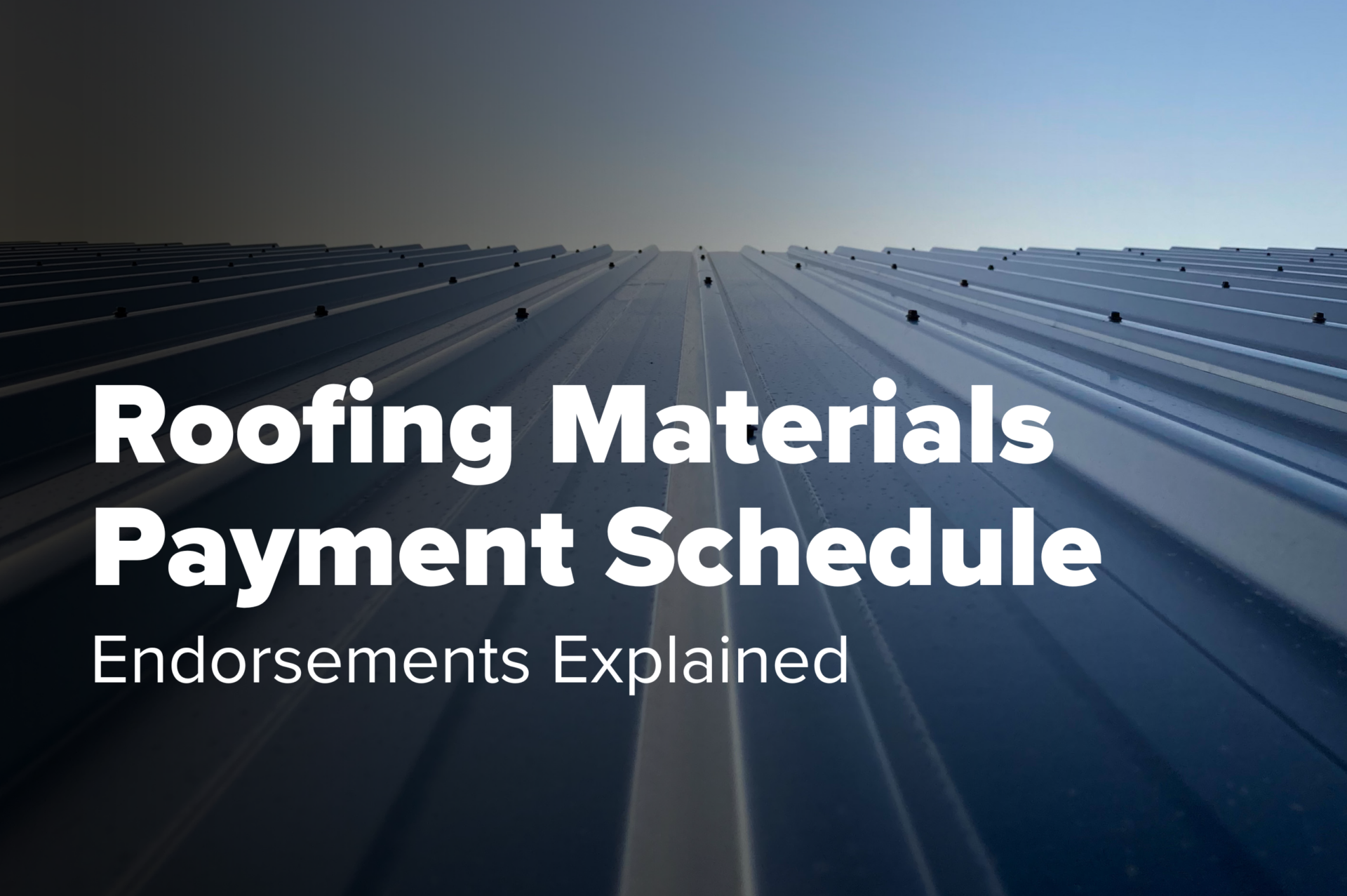Everything You Need to Know About Roofing Materials Payment Schedule Endorsements
Insurance policies are constantly evolving, and recent changes in the insurance industry—like Progressive Home’s shift toward owner-occupied homes—make it more critical than ever for property owners and contractors to stay informed about crucial policy updates. One such change involves endorsing payment schedules for roofing materials, which is becoming increasingly common in homeowners’ policies. But what exactly does this endorsement mean for property owners and contractors? And why is it crucial to understand?
What is a Roofing Materials Payment Schedule Endorsement?
A roofing materials payment schedule endorsement is an add-on to your homeowner’s insurance policy that outlines how roofing materials will be paid after storm damage. Typically, after your roof is damaged, your insurance policy will cover the cost of repairs or replacement. With this endorsement, however, the insurer may not provide a lump sum for the materials upfront—instead, payments may be broken up according to a specific schedule. Property Claims Attorneys reports, “Instead of providing a full replacement cost for a damaged roof, this schedule adjusts the settlement amount based on the age and type of roofing material.”
This endorsement often requires homeowners to pay for roofing materials upfront and wait for reimbursement from their insurance carrier according to the policy’s terms. The schedule sets expectations for when and how payments will be made, and it could vary from one insurer to another.
Why Do Insurance Carriers Include This Endorsement?
The roofing materials payment schedule endorsement isn’t about simplifying policies—it’s about minimizing insurance carriers’ financial exposure. As storm damage claims costs rise, insurers increasingly shift financial responsibility to policyholders. This endorsement allows insurers to depreciate the cost of roof repairs or replacements based on the age of the roofing materials, meaning homeowners may receive far less than they expect.
One key aspect of this endorsement is depreciation. Insurance carriers calculate depreciation based on the age and condition of your roof. For example, if your roof is 10 years old, you might only receive reimbursement for a portion of the material’s current value, even if the materials were new when installed. This can lead to significant out-of-pocket expenses for homeowners, especially when replacing a roof, which can cost thousands of dollars.
PC360 reported, “Progressive Home will focus on ensuring owner-occupied homes and bundled business policies, increasing minimum wind and hail deductibles, mandating the roofing materials payment schedule endorsement, and ensuring its agents are aligned on underwriting quality expectations.”
Translation:
Insurance carriers are making strategic moves to limit their exposure, often at the expense of policyholders. They disguise this endorsement as a way for policyholders to get a discounted premium. But what’s the real cost? Do policyholders fully understand what they agree to when signing up for these endorsements? The reality is that many policyholders don’t know what they’re signing up for, leaving them vulnerable to unexpected costs and coverage gaps. The focus is on creating policies that prioritize long-term financial stability for insurers while leaving property owners to decipher complicated endorsements and shoulder higher out-of-pocket costs. At Premier Claims, we see this shift as a way for insurers to protect their profits while leaving policyholders in the dark.
How Can Property Owners Navigate This Endorsement?
Planning ahead is crucial if your policy includes an endorsement of the roofing materials payment schedule. Homeowners should:
- Review your policy to understand how the endorsement works and whether depreciation will impact your payout. Our team is here to help you understand any confusing jargon—have your policy reviewed by our team today!
- Work with contractors to get detailed estimates for roofing materials and consider setting aside funds for any potential gaps between the insurance payout and actual costs.
- Consult with a public adjuster like Premier Claims if you believe your insurer is undervaluing your roof or if you’re facing payment delays.
Why It’s Crucial to Stay Informed
Property owners need to review their homeowner’s policy to determine whether a roofing materials payment schedule endorsement is included. By understanding your policy and working with a trusted public adjuster, you can better navigate the claims process and hopefully create a solid foundation to receive proper reimbursement.
If you’re unsure whether your policy includes a roofing materials payment schedule endorsement or if you’re dealing with an underpaid claim, contact Premier Claims today! We’re here to help you every step of the way.
"*" indicates required fields

